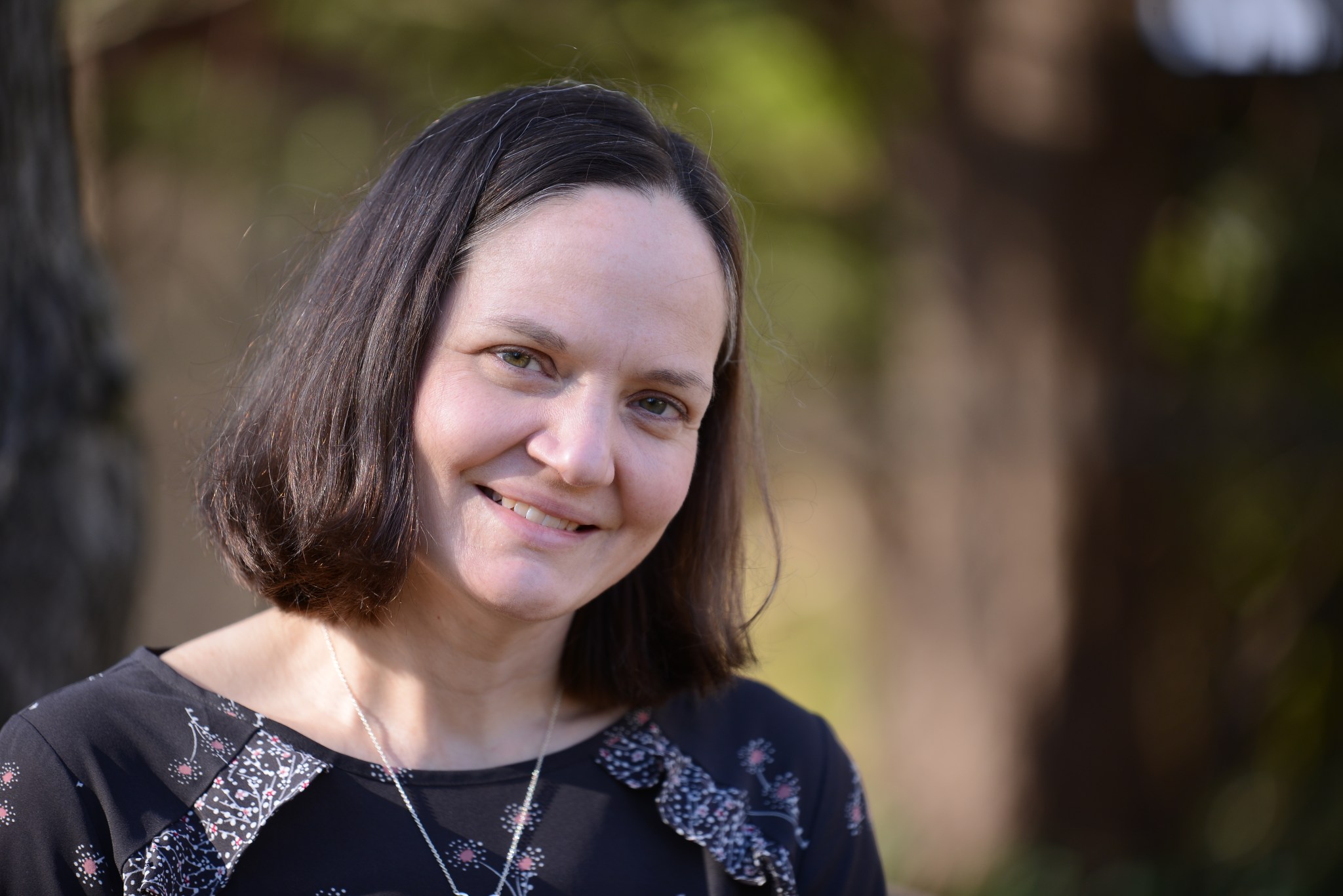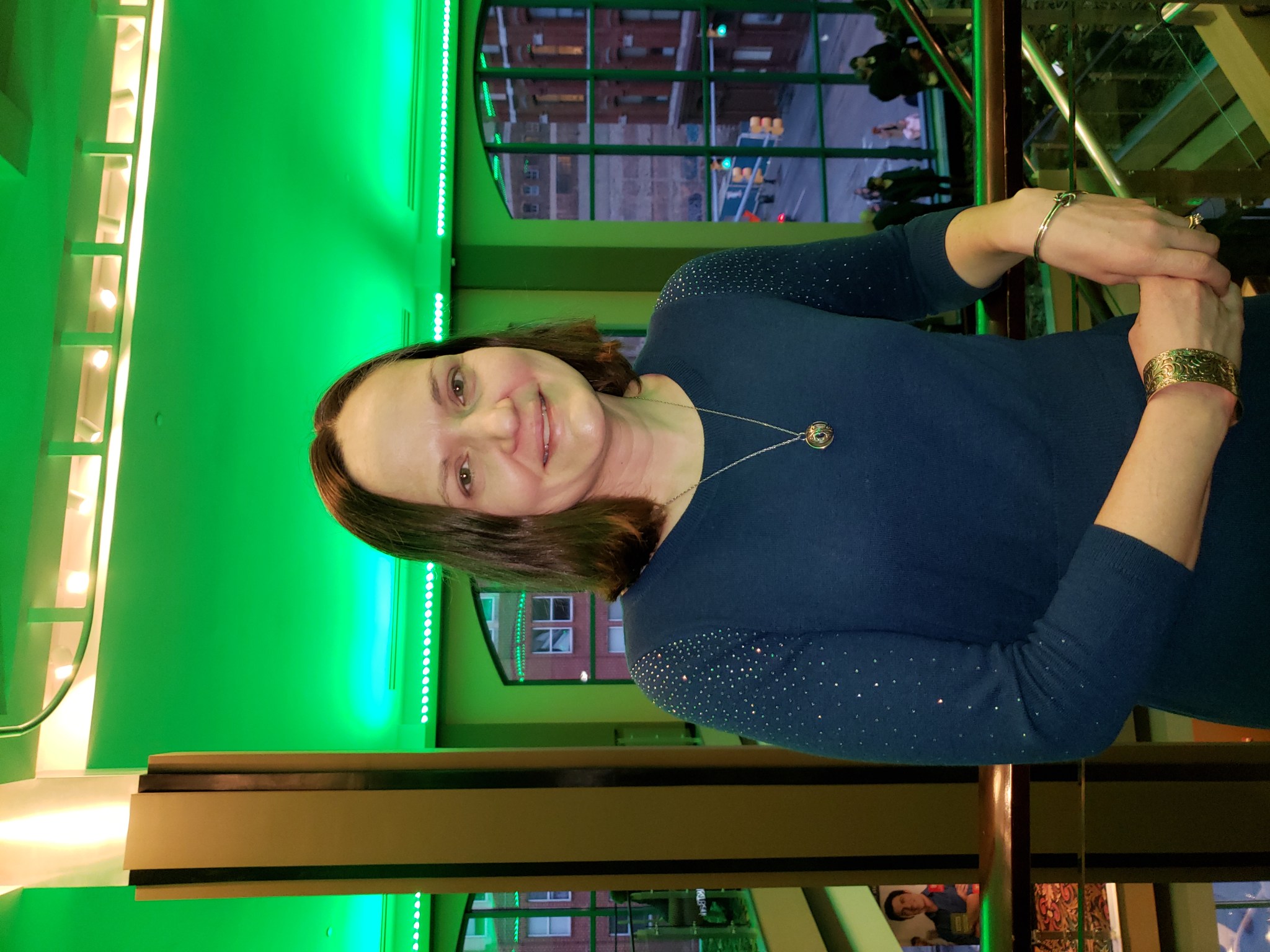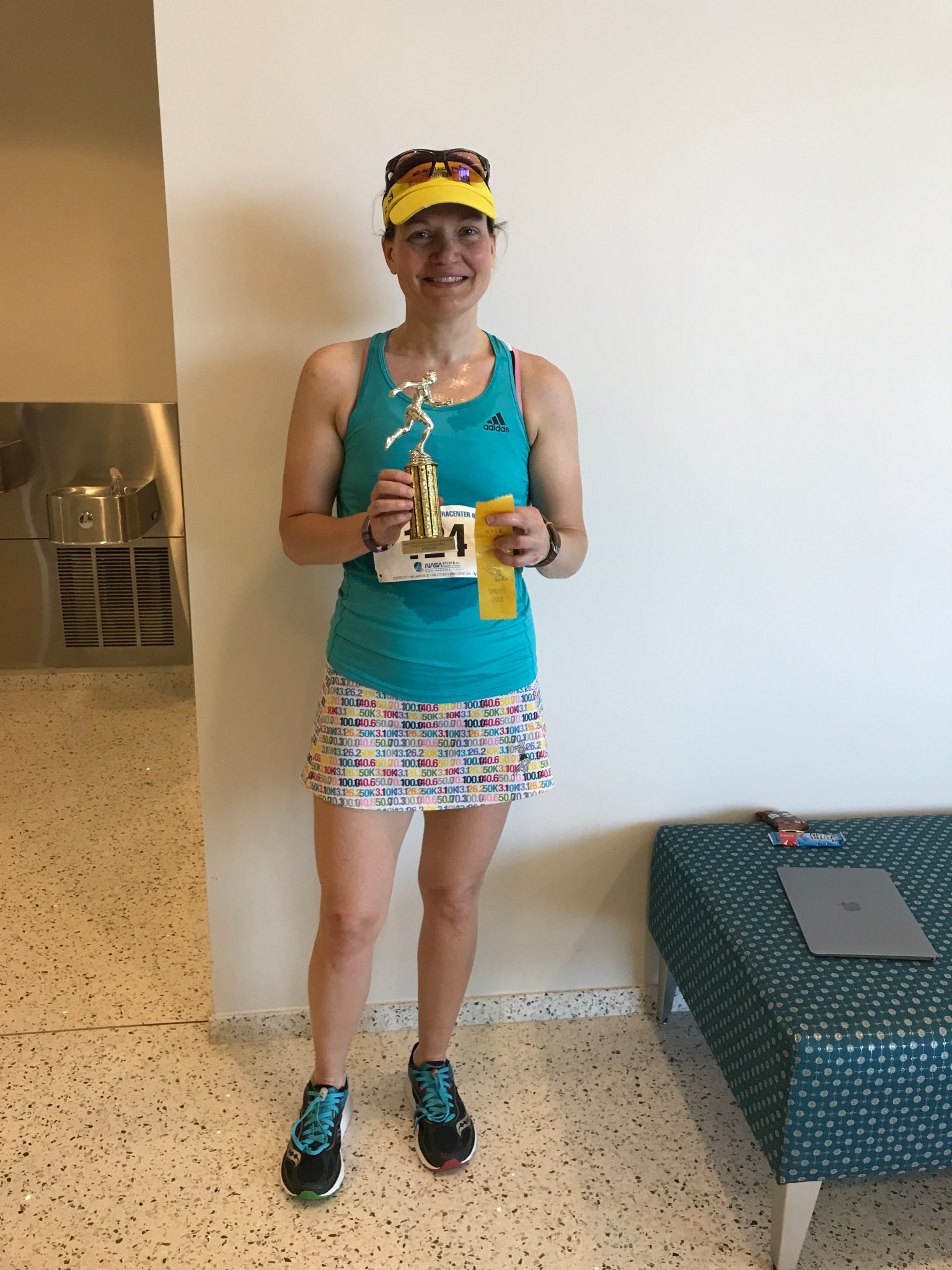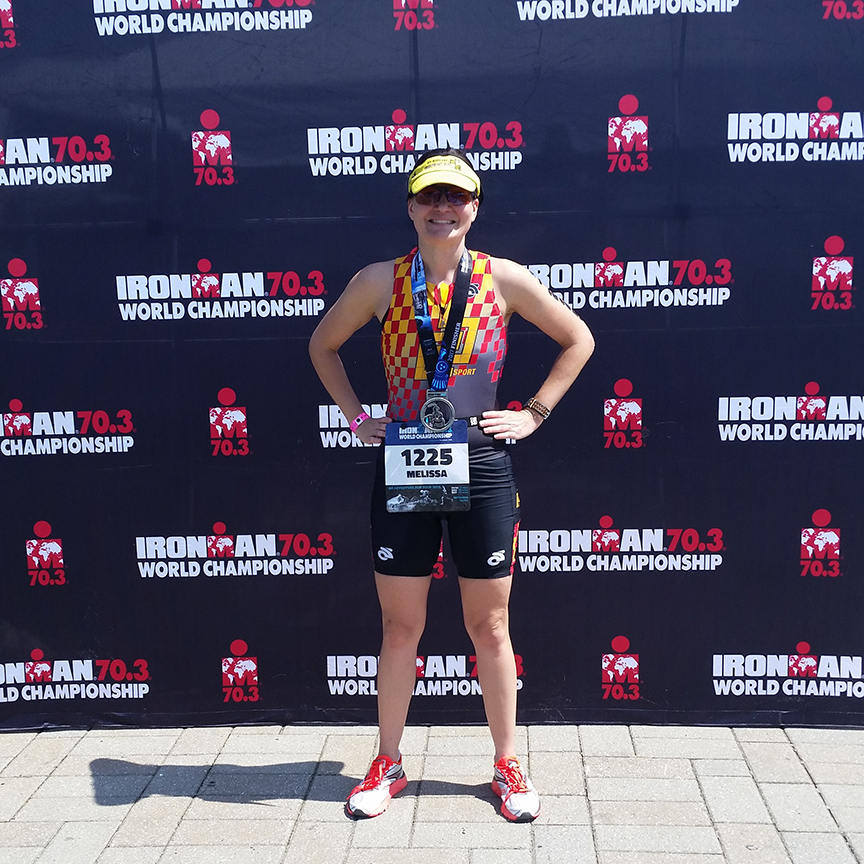Name: Melissa Vess
Title: Spacecraft systems engineer for the Roman Space Telescope
Formal Job Classification: Aerospace engineer
Organization: Code 599, Mission Systems Engineering Branch, Engineering Technology Directorate
What do you do and what is most interesting about your role here at Goddard? How do you help support Goddard’s mission?
I am a systems engineer. I look at the big picture of a mission on the engineering side, how all of the pieces fit together. Currently I am the spacecraft systems engineer for the Roman Space Telescope, which will be NASA’s next large space observatory after the James Webb Space Telescope.
How did you know you wanted to be an engineer?
I liked putting things together. As a child, I loved puzzles, Legos and anything that I could use to build something. I was always good at math and science. When I was in middle school, I decided to become an engineer.
What is your educational background?
I got a B.S. in mechanical engineering from the University of Maryland, College Park. I then got a master’s in aerospace engineering from the University of Maryland, which I earned after I started working at Goddard.
How did you come to work at Goddard?
My senior year at College Park, a recruiter came to campus. I interviewed with him and he later brought me to Goddard for on-site interviews.
Before then, I did not even know Goddard existed. I grew up in North Carolina, and I always dreamed of working for NASA. But in my mind, NASA was Kennedy Space Center in Florida or Johnson Space Center in Houston. I was really excited when I got a job at Goddard.
What are some of highlights of your almost two decades at Goddard?
To me, the highlights have been working the launches for the Solar Dynamics Observatory (SDO) and the Global Precipitation Measurement Mission (GPM). My background is attitude control systems, and I worked on SDO and GPM developing and implementing the ACS subsystem.
There is something truly exciting about seeing something you worked on for years actually launch. What first goes through my head is, “Boy, I hope it gets there and is safe.” And then it is just surreal. We get data down from something orbiting Earth that we helped design and implement. It is so inspiring.
What makes Roman special?
Roman is going to investigate dark energy and dark matter. It will also look for exoplanets. Our primary instrument, the wide-field instrument, has a camera with a field of view a hundred times larger than that of the Hubble Space Telescope. In one picture from Roman, we will be able to see more than what is contained in hundreds of photos from Hubble. Our launch readiness date is July 2026.
What do you do as the spacecraft systems engineer for Roman?
I am the technical lead of the spacecraft portion. I am responsible for overseeing all the different subsystems that make up the spacecraft. I make sure that all the puzzle pieces fit together. It goes back to my childhood love of puzzles.
We have 10 major subsystems, several of which are broken down into smaller subsystems. It is a big team of several hundred people. I deal predominately with the leads for each major and minor subsystem.
Goddard is designing and building the spacecraft, but we are purchasing hardware from vendors across the U.S. and even Europe.
How do you coordinate across all these different teams?
We have weekly coordination meetings. We also have smaller meetings with different stakeholders whenever a question or problem needs to be addressed. I have a deputy who works with me. We work with all the leads to make sure they have all the information they need. Coordinating information is critical to keeping the teams together and in sync.
Sometimes what is best for one subsystem may not be good for another subsystem. When that happens, we have to analyze pros and cons to come up with the best path forward for the entire system as a whole. Sometimes buy-in from the leads is very important, and other times people are just looking for direction and a path forward.
In general, everyone just wants to do what is best for the mission. They are all team players. They are willing to do whatever is necessary to build the best possible system.
What is the best thing about working at Goddard?
The people and the missions. We do challenging science missions that are exciting to work on, and the people are outstanding. Goddard has such an engaging atmosphere. Everyone is thrilled to be there and do the work we do. It makes you excited just to be a part of it all.
What advice do you generally give as an assignment mentor for the Systems Engineering Educational Development (SEED) Program?
The Mission and Instrument Systems Engineering Branches together developed the SEED program. The goal of SEED is to grow the next generation of systems engineers. I actually went through the SEED program in 2014 and 2015 and I have been an assignment mentor. As an assignment mentor, I helped my mentee with her assignments, met with her a few times a week, and generally helped her with any questions as they arose. She always had someone to go to if she got stuck.
Generally, we mentor someone for about a year and then they move on. We give them the opportunity to work as a systems engineer under the supervision of an existing systems engineer on a real flight project. After about a year, participants move on to a different project. That way, they get experience on different types of projects with different mentors.
The most important advice I give them is to never be afraid to ask questions. No one expects you to know everything. Asking questions is how you learn.
As an eight-time women’s winner of Goddard’s biannual fun run, what is your secret?
I have been doing triathlons since 2005. I grew up a competitive swimmer specializing in the 100 and 200 butterfly and the 200 and 500 freestyle. After swimming for so long, I wanted to do something different, so I signed up for a triathlon. Then I fell in love with the sport. I love the challenge of doing three different disciplines in one race, which are swimming, biking and running. It feels good to complete something when you are not sure at first that you can do it.
I usually train about six days a week mixing up all three sports. On any given day, I swim between 3,000 to 4,000 yards, bike about 16 to 30 miles, or run anywhere from 5 to 10 miles. I do each of these activities about three times a week.
I am always training for some future race.
In 2017, I competed in the Ironman 70.3 Age Group World Championship, which was in Chattanooga, Tennessee, that year. The 70.3 is known as the half Ironman. It includes 1.2 miles of swimming, 56 miles of biking and 13.1 miles of running which is a total of 70.3 miles in one race. You start with the swim, then you bike, then you run. It took me about 5 ½ hours, which was not my best, but I had crashed my bike four weeks before the race and was recovering from injuries.
You have to qualify to participate in the World Championships, so some of the fastest racers from around the world were there. I was just happy to be there and able to participate.
I look forward to racing again.
Who inspires you most at Goddard?
John Ruffa has been my unofficial mentor since the SDO days. In 2014, he became my official mentor while I went through the SEED program.
As the mission systems engineer on SDO, John taught me about systems engineering and encouraged me to become a systems engineer. Watching him do his job really inspired me to want to be in that type of job. I wanted to see the whole thing, the big picture. He encouraged me. I would visit him and talk to him and he always told me to go for it. Whenever I had questions, I could always talk to him and he would tell me his experiences in similar situations. To this day, I still turn to him for help and advice.
What is your “six-word memoir”? A six-word memoir describes something in just six words.
Engineer. Mom. Triathlete. Passionate. Caring. Loyal.
By Elizabeth M. Jarrell
NASA’s Goddard Space Flight Center, Greenbelt, Md.
Conversations With Goddard is a collection of Q&A profiles highlighting the breadth and depth of NASA’s Goddard Space Flight Center’s talented and diverse workforce. On average, the Conversations have been published twice a month since May 2011 and are archived on Goddard’s “Our People” webpage.
































